|
|
1. Demonstration Center in SĂŁo LuĂs - MA
Last modified: 28.01.2015
Text adapted from Galdino et al. (2010). SENAI-MA Demonstration Centre is located in a building designed and built specifically for this purpose, the Center for Technology Education and Mobile Actions - CETAM, industrial District of São Luís - MA (Figure 1). This building, with an area of about 100m2 is, as the example of the Solar House of CEPEL, similar to a conventional residential building, with classrooms, 2 bedrooms, bathroom, dining room/kitchen, laundry area and terrace. 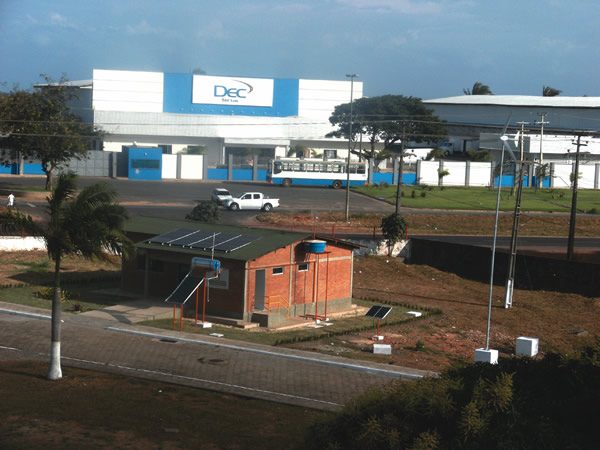
Figure 1 - Photo of the Demonstration Centre in São Luis - MA The room will serve for lectures and audio and visual projections, and one room will house switchboards and data acquisition system. The power is generated from an autonomous hybrid PV-wind system, though the dimensions have been provided for the PV system only. Despite the fact that the wind resource is not mapped by measurements, the site presents records that prove a favorable wind profile for its use. The use of this technology is of great importance for educational exemplification, since the coast of the state of Maranhão has favorable areas for the deployment of wind farms. The anticipated loads are: lighting, refrigerator, 32" LCD TV, laptop computer, overhead projector, DVD and data acquisition system. The drinking water will be provided by an autonomous photovoltaic pumping system (not connected to the electrical system of the house) with its motor-powered surface pump in DC, simulacrum of a pumping system from a water body (e.g. river, dam). The hot water for consumption in the bathroom and kitchen is produced by a solar thermal system. The technical data of the Solar House of SENAI-MA is shown on Table 1. Table 1 - Characteristics of systems of SENAI-MA Demonstration Centre | Hybrid system | Sun radiation | 4.00 kWh/m2.day |
|---|
| Daily consumption | 3.5 kWh/day | | System voltage | 48 Vdc | | Photovoltaic array | 1560 Wp (4s * 3p * 130 Wp) | | Battery Bank | 32.64 kWh (4s * 4p * 170 Ah @C20) | | Wind Turbine | 1 kW | | Solar water heating | Thermal reservoir | 200 L |
|---|
| Thermal Collector | 1 m2 | | Water pumping | Daily consumption | 600 L/day |
|---|
| Photovoltaic array | 54 Wp | | Motor pump | 12 Vdc, surface, diaphragm-type | The amount of solar radiation that was adopted in Table 1 refers to the lowest average monthly rate in São Luis - MA, according to Atlas Solarimétrico do Brasil (UFPE,2000). The roof of the building was designed with the inclination and orientation characteristics that are appropriate to receive a thermal solar system running on thermosiphon, as well as the photovoltaic energy conversion and pumping systems. The SENAI-MA center also uses a water pumping mobile kit and another power conversion kit. A view of this construction is presented on Figure 2. 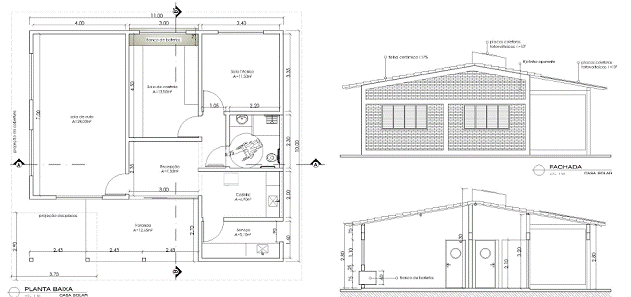
Figure 2 - Views of the architectural design of the building of the Demonstration Center in São Luís (MA). 1.1. Data Acquisition System The system is fully monitored and controlled through a data acquisition system developed and implemented by SENAI based on a PLC, a notebook computer and wireless network. The PLC used is equipped with 24 digital inputs, 14 analog inputs and 24 digital outputs, the use of which is described below. The analog monitored quantities are as follows: - Voltage (Vdc) and Current (Icc) of the Photovoltaic Panel;
- Solar radiation incident on the plane area of the photovoltaic panel (W/m2);
- Voltage (Vdc) and Current (Acc) in the battery bank;
- Voltage (Vac) and current (Aac) in two sets of loads A and B;
- Temperature of the PV panel and ambient temperature (°C);
The digital inputs are distributed as follows: - 10 switches for remote control of lighting;
- 6 occupancy sensors in various environments;
- Remote on/off system;
- Automatic/manual lighting control;
- Emergency button;
The acquisition system consists of a control box allowing you to view the state of all electrical loads as well as the remote activation of electrical loads. The analog values are transmitted via wireless network to a computer in the building of SENAI-MA, where they are stored every second. A notebook computer inside the house will allow visitors to access the data. 1.2. Bibliography Galdino, M.A. et al, 2010, "Criação de Quatro Centros de Demonstração de Energias Renováveis em diferentes regiões do país". In: Congresso brasileiro de Energia Solar, 3., Belém, Set. UFPE, 2000. Atlas Solarimétrico do Brasil: Banco de Dados Terrestres. 1ª ed. Recife, Ed. Universitária da UFPE. ISBN 85-7315-142-0.
2. Road Demonstration Unit of Curitiba - PR
Last modified: 28.01.2015
Text adapted from Galdino et al. (2010). The Demonstration Centre of SENAI Curitiba is a road mobile unit, mounted in a van-type vehicle. This car is used in traveling demonstrations within the State of Paraná and has the setting of photovoltaic modules on the roof of the vehicle and an adaptation of a living room inside of it (pictured in Figure 1). This unit serves as a demonstration of solar photovoltaic technology in presentations in three shifts (morning, afternoon and evening). 
Figure 1 - Photo of Road Demonstration Unit of SENAI Curitiba - PR. The van, called Projeto Solaris, has electrical loads inside typical of residential use, such as the following equipment: lighting (lamps), fan, blender, fridge, laptop computer and 46" LED TV, powered by a photovoltaic panel which is mounted on the roof of the vehicle, thus serving as a demonstration of autonomous photovoltaic systems for residential use. The battery bank, inverter and load controller are packed in transparent frames to allow their display. There is a synoptic table showing the magnitudes (currents, voltages, etc.) involved in operating the photovoltaic system including a pyranometer for measuring the instantaneous solar radiation. The configuration of the mobile unit PV system of SENAI-PR is shown in Table 1. Table 1 - Characteristics of the PV system of the SENAI-PR van | Electrical system | Sun radiation | 3.06 kWh/m2.day |
|---|
| Daily consumption | 1.3 kWh/day | | System voltage | 24 Vcc | | Photovoltaic array | 870 Wp (2s * 5p * 87 Wp) | | Battery Bank | 12.24 kWh (2s * 3p * 170 Ah @C20) | | Vehicle | Internal capacity | 16 m3 |
|---|
Although it is a mobile unit that travels throughout the state, the amount of solar radiation adopted in Table 1 refers to the lowest average monthly rate in Curitiba-PR, according to Atlas Solarimétrico do Brasil (UFPE,2000). The van also carries 2 mobile kits: PV system for water pumping and solar power conversion system. The mounting of a water heating mobile kit is also provided. During shifts, the kits will be packaged inside the van and secured by appropriate strapping mooring. Once in the place of the presentation, those will be mounted externally to the truck for demonstration. Figure 2 shows cross-sectional views of the van and accommodations within. 
Figure 2 - Internal Arrangement of SENAI-PR van. 2.1. Bibliography Galdino, M.A. et al, 2010, "Criação de Quatro Centros de Demonstração de Energias Renováveis em diferentes regiões do país". In: Congresso brasileiro de Energia Solar, 3., Belém, Set. UFPE, 2000. Atlas Solarimétrico do Brasil: Banco de Dados Terrestres. 1ª ed. Recife, Ed. Universitária da UFPE. ISBN 85-7315-142-0.
3. River Demonstration Unit in Manaus - AM
Last modified: 28.01.2015
Text adapted from Galdino et al. (2010). SENAI Demonstration Center in Manaus-AM is installed on the mobile river unit used by SENAI for traveling courses along the rivers of the North region. The Boat School Samaúma (Figure 1) travels through the North region offering professional courses mainly to riverine communities of the municipalities of Amazonas, but also serving cities in Pará, Acre and Roraima. The vessel offers several categories of courses, including bakery, mechanics, industrial sewing, carpentry, environmental education and computing, staying about 30 days in each served city (SENAI, 2010). 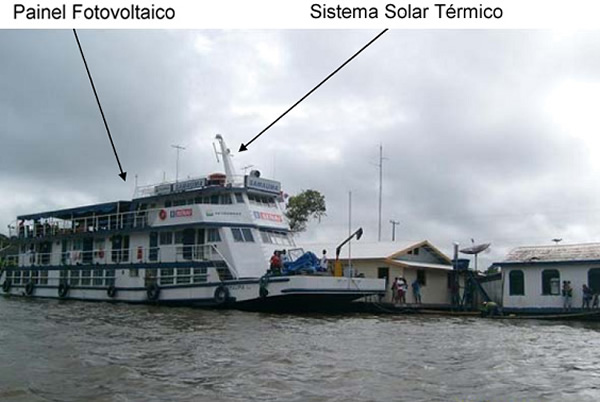
Figure 1 - Detail of the vessel Samaúma and location of photovoltaic panels and solar thermal system. The PV system is mounted in a lab located on the second deck of the vessel, and the photovoltaic panel is installed on the roof, in a mobile structure, allowing manual inclination and orientation adjustment in accordance with the conditions of the city where the boat is anchored in order to optimize energy conversion. The solar thermal system is of the compact type, also mounted on the roof of the vessel in a mobile structure that allows adjustments in order to heat the water and maintain the operation of the thermosyphon, regardless of where the boat is anchored. The hot water consumption is very small because the system is only intended for demonstration and will have no effective use. Anticipated loads are lighting, fridge, HF radio transceiver and computer connected to the Internet (if the cell phone network in the city allows). The system also has a synoptic table showing the magnitudes of interest (pictured in Figure 2) and also the use of a pyranometer for measuring the instantaneous solar radiation. 
Figure 2 - Map of Photovoltaic Panel and synoptic table aboard Samaúma. The configurations of the systems on Samaúma are provided in Table 1. Table 1 - Characteristics of the systems on Samaúma | Electrical system | Sun radiation | 4.00 kWh/m2.day |
|---|
| Daily consumption | 1.2 kWh/day | | System voltage | 24 Vcc | | Photovoltaic Panel | 780 Wp (2s * 3p * 130 Wp) | | Battery Bank | 12.24 kWh (2s * 3p * 170 Ah @C20) | | Solar water heating | Cold water box | 100 L |
|---|
| Thermal reservoir | 75 L | | Solar thermal collector | 1 m2 | In addition to onshore demonstrations, Samaúma also carries 3 mobile kits: PV for water pumping, photovoltaic energy conversion and photovoltaic system for radio transceiver. The amount of solar radiation adopted in Table 1 refers to the lowest monthly average rate in the Amazon region, according to Atlas Solarimétrico do Brasil (UFPE, 2000). All students served by Samaúma receive information about the solar systems installed on the vessel. In addition, for each served municipality, at least one specific lecture was scheduled for the dissemination of technology. The system installation allows free access for interested visitors to the laboratory where the PV equipment systems (batteries, load controller and inverter) are located, though there is no direct access to the photovoltaic panel on the roof, due to the fact that its location is considered dangerous to the public in general. However, the thermal system is mounted on the roof in a location that allows access for visitors, in small groups (5 people) to be instructed about the operation of the system. 3.1. Bibliography Galdino, M.A. et al, 2010, "Criação de Quatro Centros de Demonstração de Energias Renováveis em diferentes regiões do país". In: Congresso brasileiro de Energia Solar, 3., Belém, Set. UFPE, 2000. Atlas Solarimétrico do Brasil: Banco de Dados Terrestres. 1ª ed. Recife, Ed. Universitária da UFPE. ISBN 85-7315-142-0.
4. Demonstration Center of Taguatinga - DF
Last modified: 28.01.2015
Text adapted from Galdino et al. (2010). SENAI-DF Demonstration Center is located in a building designed and built specifically for this purpose at SENAI Taguatinga (Figure 1). This building has two floors and a built area of about 124m2. It has an auditorium, dining room/ kitchen, bathroom, reception and a specific area for the installation of electrical equipment of solar photovoltaic system as well as enabling visualization of the equipment, and facilitating its maintenance (see the views of architectural design in Figure 2). The building is powered by a photovoltaic energy conversion. The water heating for bathroom / kitchen is made by a solar thermal system, while the water pumping is done by an autonomous photovoltaic system. The settings are as shown in Table 1. 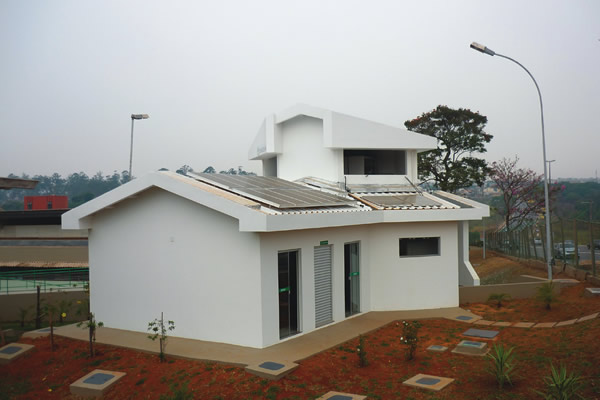
Figure 1 - SENAI Demonstration Center in Taguatinga - DF Table 1 - Characteristics of the systems of SENAI-DF Demonstration Center. | Electrical system | Sun radiation | 4.40 kWh/m2.day |
|---|
| Daily consumption | 3.5 kWh/day | | System voltage | 48 Vcc | | Photovoltaic array | 1560 Wp (4s * 3p * 130 Wp) | | Battery Bank | 32.64 kWh (4s * 4p * 170 Ah @C20) | | Solar water heating | Thermal reservoir | 200 L |
|---|
| Thermal Collector | 1 m2 | | Water pumping | Daily consumption | 600 L/dia |
|---|
| Photovoltaic array | 54 Wp | | Motor pump | 12 Vdc, surface, diaphragm-type | The amount of solar radiation that was adopted on Table 4 refers to the lowest average monthly rate in the city of Taguatinga-DF, according to Atlas Solarimétrico do Brasil (UFPE, 2000). 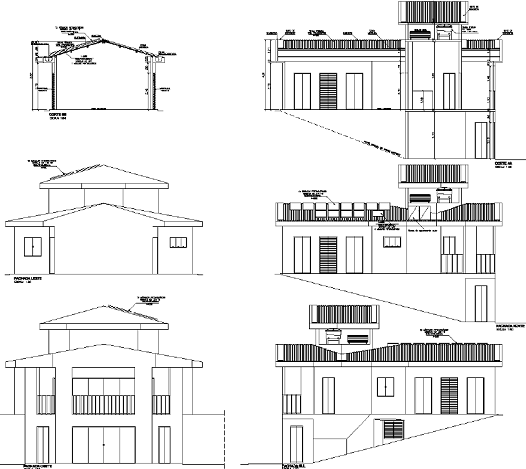
Figure 2 - Views of the architectural design of a building in the Demonstration Center in Taguatinga (DF). Similar to the Project Demonstration Center of SENAI-MA, the Demonstration Center of SENAI-DF will have a monitoring system of electrical magnitudes from the entire PV system. The acquisition system will have a control box allowing you to view the state of all electrical loads, as well as its remote activation (Figure 3). The measurements are transmitted via wireless network to a computer in the building of SENAI-DF, which will be stored at every second. A notebook computer inside the house will allow visitors to access the data. 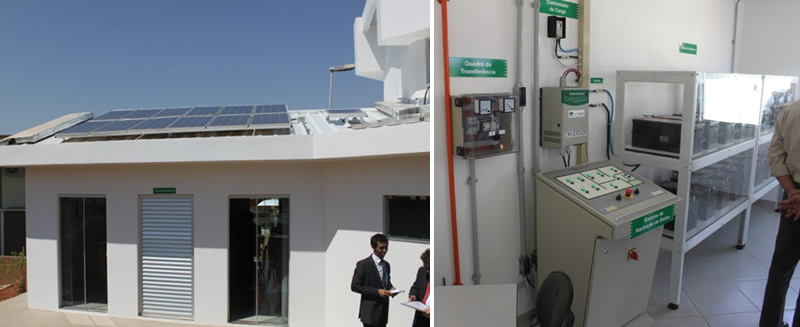
Figure 3 - Map of the components of the solar photovoltaic system. The Center will make scheduled visits, targeting students and high school teachers and university professors. It will also serve to the lay public in general. SENAI-DF also provides the use of the center for training professionals in renewable energy. For demonstrations that are external to the premises, SENAI-DF will feature 3 Mobile Kits: power conversion kit, water pumping kit and computer kit. 4.1. Bibliography Galdino, M.A. et al, 2010, "Criação de Quatro Centros de Demonstração de Energias Renováveis em diferentes regiões do país". In: Congresso brasileiro de Energia Solar, 3., Belém, Set. UFPE, 2000. Atlas Solarimétrico do Brasil: Banco de Dados Terrestres. 1ª ed. Recife, Ed. Universitária da UFPE. ISBN 85-7315-142-0.
SENAI Demonstration Center
|